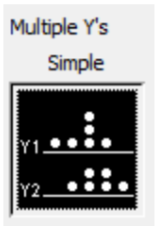15.3.7: Capítulo 8 Laboratorio
- Page ID
- 151485
\( \newcommand{\vecs}[1]{\overset { \scriptstyle \rightharpoonup} {\mathbf{#1}} } \) \( \newcommand{\vecd}[1]{\overset{-\!-\!\rightharpoonup}{\vphantom{a}\smash {#1}}} \)\(\newcommand{\id}{\mathrm{id}}\) \( \newcommand{\Span}{\mathrm{span}}\) \( \newcommand{\kernel}{\mathrm{null}\,}\) \( \newcommand{\range}{\mathrm{range}\,}\) \( \newcommand{\RealPart}{\mathrm{Re}}\) \( \newcommand{\ImaginaryPart}{\mathrm{Im}}\) \( \newcommand{\Argument}{\mathrm{Arg}}\) \( \newcommand{\norm}[1]{\| #1 \|}\) \( \newcommand{\inner}[2]{\langle #1, #2 \rangle}\) \( \newcommand{\Span}{\mathrm{span}}\) \(\newcommand{\id}{\mathrm{id}}\) \( \newcommand{\Span}{\mathrm{span}}\) \( \newcommand{\kernel}{\mathrm{null}\,}\) \( \newcommand{\range}{\mathrm{range}\,}\) \( \newcommand{\RealPart}{\mathrm{Re}}\) \( \newcommand{\ImaginaryPart}{\mathrm{Im}}\) \( \newcommand{\Argument}{\mathrm{Arg}}\) \( \newcommand{\norm}[1]{\| #1 \|}\) \( \newcommand{\inner}[2]{\langle #1, #2 \rangle}\) \( \newcommand{\Span}{\mathrm{span}}\)\(\newcommand{\AA}{\unicode[.8,0]{x212B}}\)
Teorema de Límite Central
Abra el archivo Minitab lab07.mpj desde el sitio web.
La vida útil de las unidades de escaneo óptico sigue una distribución sesgada con\(\mu=100\) y\(\sigma=100\). Las cinco columnas etiquetadas CLT\(n\) = representan 1000 muestras aleatorias simuladas de 1, 5, 10, 30 y 100 de esta población.
- Haz gráficas de puntos de los 5 tamaños de muestra usando la opción Múltiple Y's Simple y pega el resultado aquí.

- A medida que cambia el tamaño de la muestra, describa el cambio en el centro.
- A medida que cambia el tamaño de la muestra, describa el cambio en la propagación.
- A medida que cambia el tamaño de la muestra, describa el cambio de forma.
- Mediante el comando STAT>DISPLAY ESTADÍSTICA DESCRIPTIVA, determinar la media y desviación estándar para cada uno de los cinco grupos Pega los resultados aquí.
- El Teorema del Límite Central establece que el Valor Esperado de\(\bar{X}\) es\(\mu\). A medida que aumenta el tamaño de la muestra, describa el cambio en la media. ¿Esto es consistente con el Teorema del Límite Central?
- El Teorema del Límite Central establece que la Desviación Estándar de\(\bar{X}\) es\(\sigma / \sqrt{n}\). A medida que aumenta el tamaño de la muestra, describa el cambio en la desviación estándar. ¿Esto es consistente con el Teorema del Límite Central?
- Lo que has observado son las tres partes importantes del Teorema del Límite Central para la distribución de la media muestral\(\bar{X}\). En sus propias palabras, describa estas tres partes importantes.


